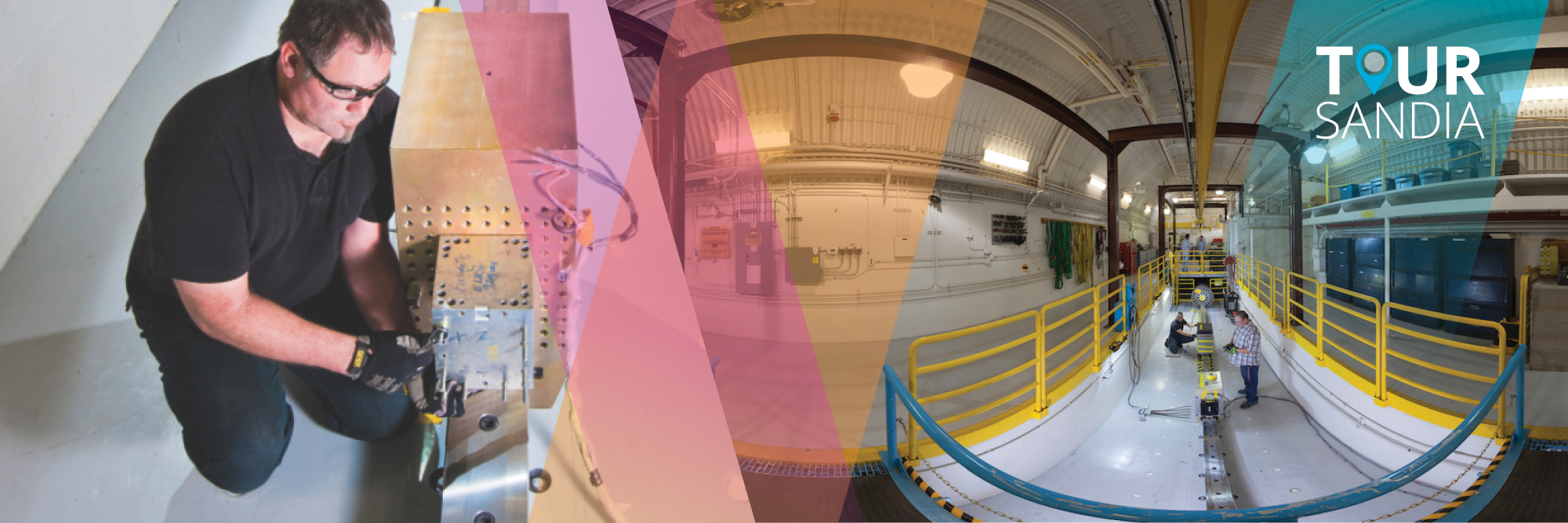Overview
The Mechanical Shock Complex is Sandia’s oldest environmental test facility. It opened in 1946 when Sandia was still known as Z Division. Originally housed in Tech Area 1, the structure was home to shake tables, a pendulum for mass gravity measurements, and a cold chamber. The facility moved to Tech Area 3 in 1956 to better serve Sandia’s impact test needs. After nearly seven decades of service, it was refurbished and opened its doors again with the goal of producing higher quality and higher speed shock tests to validate high-value components and subsystems.
In 2011, Mechanical Shock announced completion of a new Test Capability Revitalization-funded actuator that can produce up to 1.5 million pounds of thrust and generate super-powerful shock pulses. Sleds travel on a precision-machined and aligned monorail. In 2014, another renovation brought a new large-bore gas gun, allowing even faster and more flexible testing.
The actuators design produces higher speed shock tests for Sandia's shock-testing mission, most of which concern weapons components or subsystems. The facility fills a critical gap between tests that can be conducted in small laboratory-scale facilities and those that require the high speeds and energy levels of the Rocket Sled Test Facility.
Mechanical shock is characterized by a transient acceleration and is commonly simulated with a controlled impact that produces an acceleration pulse. In addition to traditional shock pulse testing, the facility is frequently used to produce a controlled dynamic crush of weapon nose structures, aluminum honeycomb, and other components to evaluate functionality or to validate analytical models.
